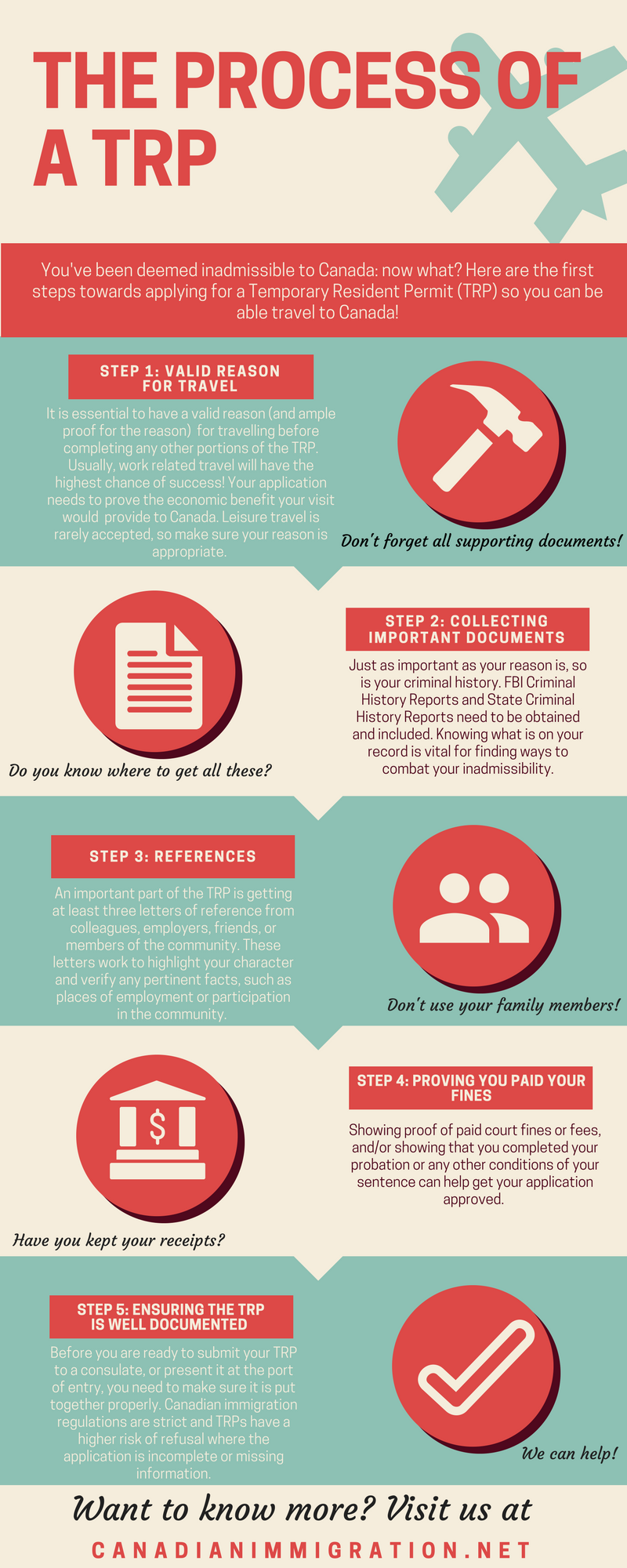Application Checklist for a Canada Temporary Resident Permit
You’ve just been denied entry to Canada based on one or more previous criminal convictions. You have arrived at the border in anticipation of tomorrow’s business conference, family event, or long-awaited trip and, through a swift scan of your passport, your offenses are instantly made available to the border agent. So what now? In order to ensure that you may travel to Canada without hindrance, you may apply for a Temporary Resident Permit (TRP). A TRP is a means of temporarily overcoming your inadmissibility to Canada, for a maximum of three years, with the specific time being determined by a Canadian border or immigration official. The following checklist will provide you with a step-by-step process on applying for a Temporary Resident Permit so that you may temporarily overcome your inadmissibility and enter Canada without interference. You can apply for a TRP at a border, consulate, or through an immigration law firm.
1 – Valid Reason for Travel
It is essential that the individual applying for a TRP has a legitimate purpose for travel. Reasons in connection with the applicant’s employment, such as important business conferences or meetings with Canadian counterparts and clientele, are particularly successful. Individuals may also apply for a TRP on humanitarian or compassionate grounds, i.e. a death in the family, visiting a sick parent, or the wedding of a close family member. Furthermore, the individual’s application must demonstrate that their presence will benefit the Canadian national interest during their authorized stays. Providing documents such as employer letters, conference/accommodation/flight itineraries for the anticipated sojourn in Canada, and proof of employment will further ensure the applicant’s success in presenting convincing reasons for travel.
2 – Provision of Important Documents
The applicant must provide all supporting documents relating to their conviction(s). FBI Criminal History Reports, State Criminal History Reports and court documents must be obtained and included in the individual’s application. Knowing exactly what is on your record and whether you completed your sentencing in its entirety is vital to combatting inadmissibility.
3 – References
In your TRP application you are required to provide letters of reference that speak to your professional and personal qualities. Letters from employers, colleagues, members of the applicant’s community and friends are all encouraged, whereas letters from family members can be seen as biased. These letters work to highlight your character and verify pertinent facts such as community involvement and places of employment.
4 – Proof of Completion of Sentencing
It is essential that the applicant proves that they have effectively completed all terms of their sentence(s) such as paid all fines and costs, completed their community service and probation.
5 – Organization
Before finally submitting a TRP to the consulate, or presenting it at the port of entry, the individual must ensure that their application is put together properly and not missing any information. Canadian immigration regulations are strict, and TRPs have a higher risk of refusal when an application is incomplete.


